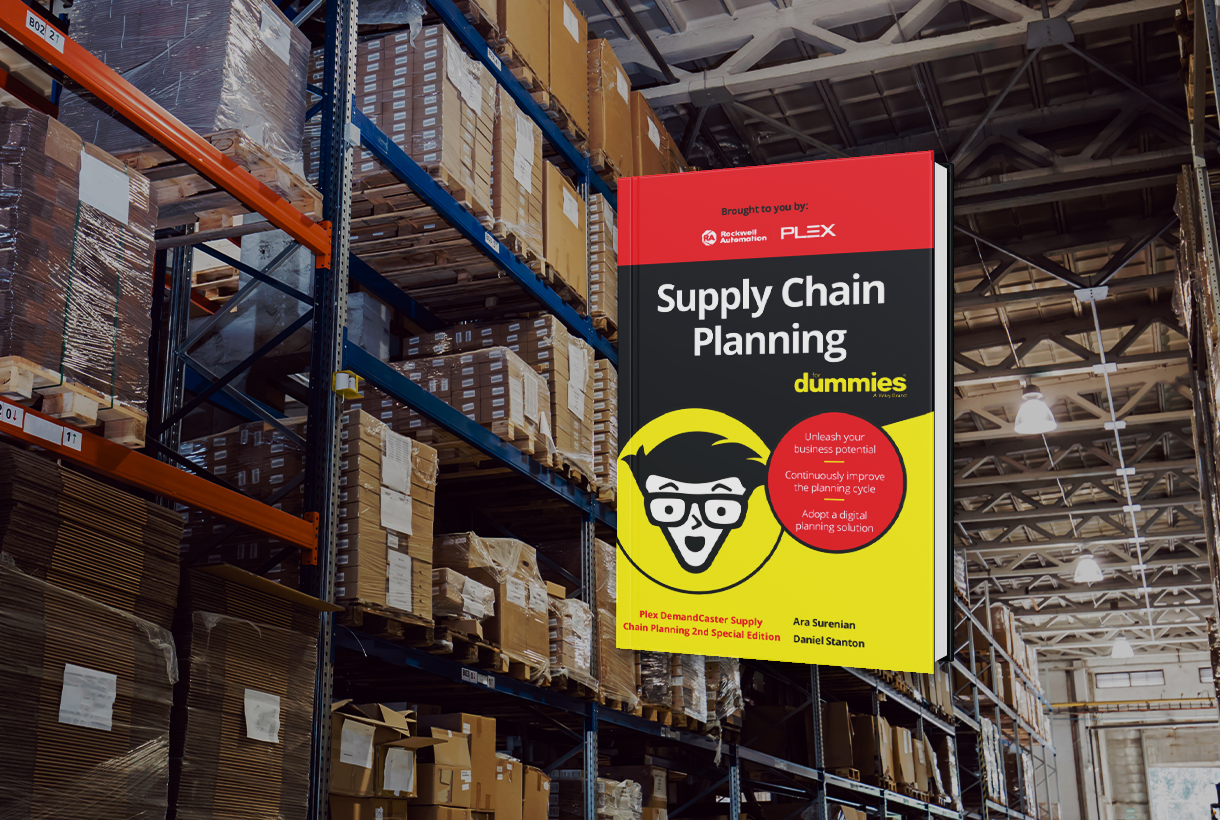Leveraging the Power of Software and Data in a Modern MRP System
The buildout of the “global economy” over the last three decades assumed – or at least hoped for a stable set of conditions that would allow companies to identify the best vendors for materials and components at the lowest prices. And for a while, it seemed as though the world was intent on building an infrastructure to unify global economies in a way never imagined.
Far-flung supply chain legs combined with lower shipping and transportation costs meant that finished goods often contained materials from across the globe. Many companies had even begun locating factories and facilities in specific geographic areas to leverage this extended supply chain.
But the events of the last few years have cast deep uncertainty into our core institutions and in business, introducing disruption and even outright chaos into a supply chain system dependent upon steady and predictable progress. Today, that uncertainty is compounded even more by the reintroduction of tariffs, natural disasters, pandemics and ongoing social unrest.
Refocusing MRP Systems to Deal with the New Normal
The above-mentioned disruptions have caused companies to rethink their supply chain at all levels, looking for solutions that allow them to continue efficient operation with the fewest constraints. Nowhere does this impact a company’s manufacturing capabilities more than in its material requirements planning (MRP) system. Without stable and reliable inputs, disruptions in the supply chain caused by continuing uncertainty threatens the ability of an MRP system to do what it was designed to do.
But can an MRP system adapt to current and future disruptions to deliver the value they have historically offered? And are there solutions that can be combined with MRP to enhance its ability to identify, react and mitigate disruptions in a way that allows companies to thrive?
The answer to those questions is yes, and it is already incorporated into modern MRP platforms that leverage data, advanced analytics and other data-driven capabilities. By focusing the core capabilities of MRP in a digital environment, these systems can provide real-time, actionable data to allow companies to respond in an agile and flexible way to disruptive events within their supply chain. And while the uncertainty created by sudden disruption can’t be avoided, data and software in an MRP system can be managed. It allows companies to develop proactive rather than reactive strategies to mitigate constraints as they occur.
A New Direction for a Mature System
MRP has been around for many decades. Conceptually, it is a mature system that has helped companies manage material requirements within a factory to improve efficiency and cost. But what is MRP?
MRP is a computer-based system that improves productivity, inventory control and cost. It also helps companies automate their manufacturing processes and manage inventory to make sure that the right material is available at the right time.
MRP in its basic form asks three questions:
- What is needed?
- How much is needed?
- When is it needed?
Driven by sales orders, a production plan is then generated for finished goods. MRP looks at the raw materials and components needed for sub-assemblies or sub-processes required to make the final product. It also has the capability to break down data such as bill of materials (BOM), bills of lading, material expiration, inventory levels, routing and both labor and equipment standards for the product needed. This information allows managers to efficiently manage and plan labor, equipment utilization, work in process (WIP)management and other floor level activities.
By working backwards from the production plan to the material requirements level, MRP for manufacturing is the production aspect of the supply chain that determines where and how materials are used and at what speed. By taking the requirement for finished goods – the independent demand – MRP then breaks it down into raw material requirements – dependent demand.
The strength of existing MRP is that it looks at the data above to coordinate the purchase, shipping and storage of raw materials in the right volume and arrival schedule to meet independent demand.
But if MRP is already a computer-based program for managing materials at the manufacturing level, how can it be more effective in navigating uncertain conditions of today’s world? The answer lies in digitization and the data-driven revolution.
The Digital Revolution – Software and Big Data for MRP
Just because a system is “computer based” doesn’t mean that it is optimized for automation. And this is true with traditional MRP. Past iterations of the technology relied upon manual inputs, inexact measurements, human intervention in the form of analysis and decision-making and a host of other issues.
But as the world undergoes a digital revolution, the addition of capabilities that use analytics, AI, machine learning and other features provides an opportunity to revolutionize the utility of MRP as well. One study by McKenzie estimated that within manufacturing, data adoption in new software platforms designed to handle massive real-time data streams would result in as much as a 50% reduction in product development, 25% lower operating costs and in industries that fully embrace digitization, as much as a 30% increase in gross profit margin.
But how can the power of data be used to power MRP software produce better results and mitigate disruptions? MRP software that is data-driven instead of process driven can deliver many benefits including:
- Unified Data – Even if a company utilizes MRP, it is not uncommon to have other software driving different departments within the enterprise. This may mean software for finance, customer service, maintenance or quality control. And if these disconnected systems remain siloed, information must be reconciled before being consumed, slowing down the process and making all analysis backward looking.
Advanced MRP software using big data and advanced analytics requires unified data. It can be integrated with many existing systems and can standardize the data so that all departments have the same data available and everyone operates under one truth.
- Data is Real-Time – Because today’s software captures data immediately, it is available in near real-time. Once a digital transformation is in place, that data streams into the system in volume. An MRP system embedded with advanced analytics is capable of parsing and analyzing data much faster than humans. This enables accurate planning, scheduling, purchasing, delivery. And because the information is not dated, it is continuously updated and analyzed with the latest input of sales orders and other sales data to provide precise quantity requirements.
Advanced analytics also merge historical data with current information in near real-time to identify trends and microtrends that would otherwise have been undetected. These trends help avoid, or at least mitigate, disruptions before they have a chance to impact the manufacturing plant floor. Managers and planners thus have more time to proactively plan for any interruptions.
- Enhanced Algorithms – Data that is streamed into advanced MRP software may have the capability to utilize machine learning to improve accuracy and reduce labor. As more and more data enter the stream, the analytical power of software can use advanced algorithms to hone requirement accuracy. The longer these algorithms run, the more the system “learns” and the more precise its calculations become. This improves overall efficiency of the MRP system while reducing errors.
The numbers advocating this capability are impressive. McKenzie estimates that if deep learning is employed by software, then many activities can be automated. They estimate that such a change could result in the percent of time spent on process activities being reduced by as much as 24% for line supervisors on the plant floor, 35% for managers of support staff, 28% of administrative staff and 27% of all other managers. By reducing or eliminating redundant and non-value added tasks, staff are free to focus on more value added activities. It improves morale, work/life balance and inspires more confidence in their day to day decision-making.
- Better Decision-Making – Because today’s software relies on advanced analytics, it can drive actionable intelligence to decision-makers. Since data no longer only a backward-looking view of historical information, leaders can avoid disruptions in supply chains by using near real-time information analyzed at the point of entry into the data stream. The data trends may detect variances that could impact production schedules and delivery. They may also identify timing issues that would allow them to change the production schedule and calculate an optimal material plan for MRP using substitutes, backup vendors or changes to the production schedule.
- More Competitive – The power of data combined with advanced software platforms to improve competitiveness cannot be overestimated. Gartner states that:
“By 2022, 90% of corporate strategies will explicitly mention information as a critical enterprise asset and analytics as an essential competency.” Gartner
This means that big data, and the software that runs it, are beginning to be considered corporate assets. This is true of MRP as well where the ability to hone processes that leverage the power of data and analytics can make a significant impact. Cost per unit, accurate delivery time and agility to better schedule the manufacturing floor to meet demand while still making improvements in efficiency all come about due to the impact of data. This means that companies using data and software for their MRP and other systems will have a competitive edge over peers who are further back in their digital transformation.
- Reduces Manual Processes – Because manufacturing and support areas are set up along process lines, a lot of effort is expended in managing the tasks of the process mechanics. Many process steps are in place simply to allow manual monitoring and control, taking up time and labor to keep the system moving. Lean, Six Sigma and other methodologies can help refine and improve the mechanisms for “doing” the processes. But the expenditure of effort and time are considerable. Digitization has the effect of reducing or collapsing processes. The level of automation and rules-bases, machine level decision-making strips away the view of manufacturing as a series of processes to manage. The reduction in time, tasks and upkeep places the focus on the customer. MRP can become truly demand based and focused on what the customer experience needs to be rather than on an archaic structure of process maintenance.
- Speeds Up Remaining Processes – With data-driven, automated processes, the remaining tasks left in MRP can be done more quickly. By stripping out tasks through automation, data and analytics help streamline remaining processes leaving only value-added tasks in place in material management and production. The capability of sorting, parsing and analyzing data in ways that improve productivity leads to a truly demand driven MRP system.
Being data-driven also means that MRP becomes more than a system of managing material requirements. It becomes part of the customer experience because the speed and quality of the data rendered by software moves customer demand into near real-time, plant floor activity. In addition to redefining process management at the factory level, it also means that MRP using advanced software and deep data allows companies to redefine customer service as well.
As companies struggle to find footing in an uncertain world, business needs must be reevaluated. This includes a realistic look at ways to control or mitigate disruptions in the supply chain that would inhibit traditional MRP systems. By utilizing advanced MRP software, the power of digitization and big data are unlocked. Companies leveraging these capabilities will find themselves in better control of their supply chain and with more agility to manage manufacturing to lower cost and improve efficiency.


